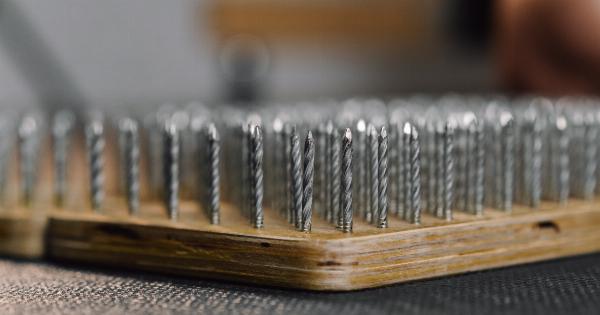Infarction and stroke are two of the leading causes of death and disability worldwide.
These medical conditions occur due to the interruption of blood flow to certain parts of the body, leading to tissue damage and potentially life-threatening complications. However, thanks to advancements in medicine, there are numerous treatment options available today to combat infarction and stroke and improve patient outcomes.
Understanding Infarction
Infarction refers to the death of tissue caused by a lack of blood supply. This occurs when a blood vessel supplying oxygen and nutrients to an area becomes blocked, typically due to the formation of a blood clot.
The most common type of infarction is myocardial infarction, which affects the heart muscle and is commonly known as a heart attack.
Myocardial infarction is a medical emergency that requires immediate treatment. Medications such as aspirin, nitroglycerin, and clot-busting drugs like thrombolytics are often used to restore blood flow to the affected area.
In some cases, surgical interventions like angioplasty or bypass surgery may be necessary to reopen blocked vessels and restore blood flow to the heart.
Tackling Stroke
Stroke occurs when blood flow to the brain is disrupted, either by a blockage or blood vessel rupture.
The two main types of stroke are ischemic stroke, which is caused by a blockage or clot, and hemorrhagic stroke, which is caused by bleeding in the brain.
Ischemic stroke is the most common type, accounting for approximately 87% of all stroke cases. Treatment for ischemic stroke focuses on restoring blood flow to the brain and preventing further damage.
Medications like tissue plasminogen activator (tPA) can be administered to dissolve the blood clot responsible for the stroke. Thrombectomy, a minimally invasive procedure, may also be performed to remove the clot and restore blood flow.
Hemorrhagic stroke, on the other hand, requires a different approach. The primary goal is to control bleeding and reduce pressure on the brain. Surgical interventions, such as clipping or coiling the ruptured blood vessel, may be necessary.
Medications to lower blood pressure and prevent spasms in the blood vessels may also be administered.
Advancements in Medications
Over the years, significant advancements have been made in medications used to treat infarction and stroke, leading to improved patient outcomes and survival rates.
One notable medication is aspirin, which is often used in the immediate management of both conditions.
Aspirin is a blood thinner that helps prevent the formation of blood clots. It works by inhibiting the production of certain substances in the body that promote blood clot formation.
As a result, aspirin reduces the risk of further clot formation and helps improve blood flow to the affected area.
Another breakthrough medication is tissue plasminogen activator (tPA), a clot-busting drug used in the treatment of ischemic stroke. tPA is administered intravenously and works by dissolving the blood clot responsible for the stroke.
When administered within a specific time frame, tPA can significantly improve outcomes and reduce long-term disability associated with ischemic stroke.
In recent years, advancements in the field of anticoagulant medications have also revolutionized the treatment of infarction and stroke.
Novel oral anticoagulants (NOACs), such as dabigatran, rivaroxaban, apixaban, and edoxaban, have been developed as alternatives to traditional blood thinners like warfarin. These medications offer more predictable dosing and require less frequent monitoring, making them more convenient for patients.
Minimally Invasive Procedures
In addition to medications, there has been a significant rise in the use of minimally invasive procedures to treat infarction and stroke. These procedures aim to restore blood flow to the affected areas without the need for major surgery.
Angioplasty is one such procedure used to treat infarction and stroke caused by blockages in the blood vessels. During angioplasty, a catheter with a deflated balloon at the tip is inserted into the blocked vessel.
Once in place, the balloon is inflated, widening the vessel and improving blood flow. In some cases, a stent (a mesh-like tube) may be inserted to keep the artery open and prevent future blockages.
Thrombectomy is another minimally invasive procedure commonly performed in the treatment of ischemic stroke. It involves using a specialized device to physically remove the blood clot blocking the blood vessel.
Thrombectomy is highly effective when performed within the recommended time frame and can significantly improve outcomes for stroke patients.
The Role of Rehabilitation
Following an infarction or stroke, rehabilitation plays a crucial role in helping patients regain their functional abilities and improve their quality of life.
Rehabilitation programs are often tailored to the individual patient’s needs and may include physical therapy, occupational therapy, speech therapy, and psychological support.
Physical therapy focuses on improving strength, mobility, and coordination. It involves exercises and activities aimed at restoring muscle function and improving overall physical fitness.
Occupational therapy helps patients regain their independence in daily activities, such as dressing, grooming, and cooking. Speech therapy addresses any speech and swallowing difficulties that may have arisen from the infarction or stroke.
Psychological support is also an important aspect of rehabilitation, as many patients may experience emotional challenges following an infarction or stroke.
Counseling and support groups can provide a safe space for patients to express their feelings, cope with any psychological distress, and learn strategies for dealing with the lifestyle changes resulting from their condition.
Conclusion
Infarction and stroke are serious medical conditions that require prompt and effective treatment. Thanks to advancements in medicine, there are now various treatment options available to combat these conditions.
Medications such as aspirin and tPA, along with minimally invasive procedures like angioplasty and thrombectomy, have significantly improved patient outcomes and survival rates. Rehabilitation also plays a crucial role in helping patients regain their functional abilities and improve their overall quality of life.
With continued research and advancements in medical science, the fight against infarction and stroke continues to grow stronger.






























